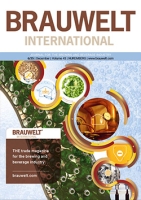In several countries of the EU the harvest has started or is already advanced. In regions with very hot weather this summer, the effects on the yield cannot be overlooked. Other regions are expecting a good harvest. The prospects are heterogeneous.
Estimates for the 2013 hop crop in Germany were finalized in the Hallertau on August 21st. We are pleased to attach a list comparing the crop results for 2012 with the estimates for 2013 for the world’s main growing areas.
Dry hopping is becoming increasingly popular especially in small breweries. It is a complex and sophisticated method, but it is exactly those qualities which make it a highly efficient method for craft brewers to stand out among the mass of other beers. Empirical experience is the key factor here in the choice of hops and type of application. There is still little known about the transfer rates of hop substances during dry hopping which can provide a great variability of application.
In order to be able to determine which chemical and physical components contribute in any quantity to a high level of user acceptance, sensory descriptive analysis and the identification of consumer acceptance of 16 wheat beers was conducted in addition to instrumental analyses. By linking the profile test and the acceptance values, significant attributes that are responsible for acceptance could be detected.
The yeast collection of VLB Berlin provides with more than 80 strains a broad range of top and bottom fermenting yeasts for the use in beer and wine production. As organic acids in alcoholic fermentation become more and more of interest regarding health and drinkability [1, 2, 3, 4, 5, 6], a screening was carried out to select strains with a reduced production rate of succinic acid. It was possible to show, that with the right selection of yeast, beer with considerable lower amount of succinic acid can be produced. Additionally this work gives an overview on yeast strain impact on other organic acids. Furthermore scale-up conditions between laboratory and pilot scale fermentations are discussed.
BrewingScience - Monatsschrift für Brauwissenschaft, 66 (July/August 2013), pp. 75-84
Achieving a homogenous malt quality within industrial scale malt batches of up to 300 tons is a major goal for the malt industry. Malt analyses represent only small samples and merely give a rough mean score over thousands of kernels. Cytolytically badly modified or even ungerminated kernels may occur consequently leading to lautering and filtration problems e.g. due to high remaining unhydrolysed â-glucan fractions. Published findings claim that relatively low temperatures during steeping and germination (12–17 °C) are required to produce high quality malts, however, these processes consequently take 5 to 7 days excluding the kilning. Most of these studies were carried out several decades ago and new barley varieties with improved malting properties are available now.
The formation of aldehydes in bottled beer is promoted by the presence of oxygen and transition metal ions. In this paper, a so far unrevealed pathway to explain this phenomenon is presented. Leucine, isoleucine, and phenylalanine were oxidized by H2O2-Fe2+ in ‘beer-like’ buffered model solutions (pH 4.5; 5 % (v/v) ethanol) at room temperature thereby yielding 3-methylbutanal, 2-methylbutanal, phenylacetaldehyde, and benzaldehyde, respectively, as measured and identified by solvent extraction and HRGC-MS. Further trials revealed that the aldehydes formed were significantly correlated with radical concentration as determined by electron spin resonance (ESR) spectroscopy indicating that hydroxyl radicals (•OH) and ethoxy radicals (EtO•) are involved in the pathway..
Spent grains are the main by-product in the brewing industry. The present practical study shows the incorporation of spent grains into indirect expanded cereals. Fermentation and cooking extrusion are the key factors for a high-fiber cereal with a very high customer acceptance.
Using a proportion of raw barley as a malt substitute is an established practice at many breweries, and is a relatively unproblematic option when used up to a proportion of 30 - 40 percent when using additional exogenous enzymes. In fact, by using special enzymes, it is nowadays even possible to produce high-quality worts with up to 100 percent barley. There is, however, some far-reaching empirical feedback from brewhouses on this, particularly when using a hammer mill and a mash filter, or a 4- and 6-roller dry mill and lauter tun. That brews with 100 percent barley can be also processed with a wet mill in conjunction with a lauter tun has been demonstrated in a series of trials conducted jointly by Krones and Novozymes in collaboration with a brewery on an industrial scale featuring 16.5 tons of grist.
At the Hopsteiner Forum in June 2013, five different wheat beers were presented to an audience of brewers and brewing scientists showing the influence of different hop varieties used for dry hopping.
Brewing scientists, don’t miss out on this: The scientific journal BrewingScience by Fachverlag Hans Carl usually covers all topics from brewing and beverage science.
For the December issue (publication date: 20 December 2013) however we will do a Hop Special. Any scientists with a focus on hop research are cordially invited to submit their scientific papers by 2 September 2013 at the latest.
Please note that all papers should be written according to the author guidelines published at www.brewingscience.de/pdf/BrewingScience_authors_guidelines.pdf. If you have any questions, call us on +49 (0)911 952 85-58 (Dr Lydia Winkelmann).


